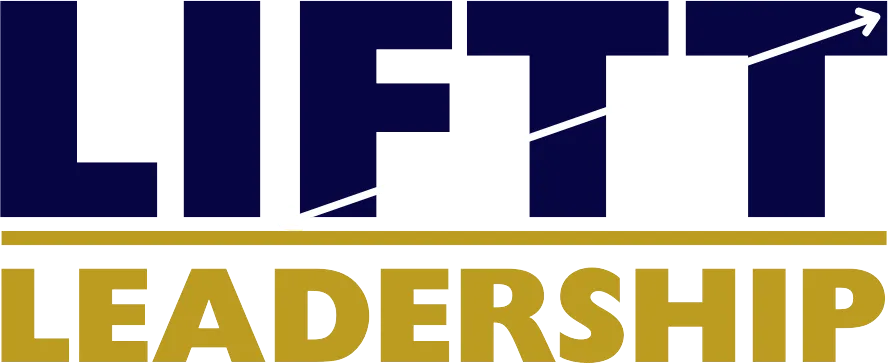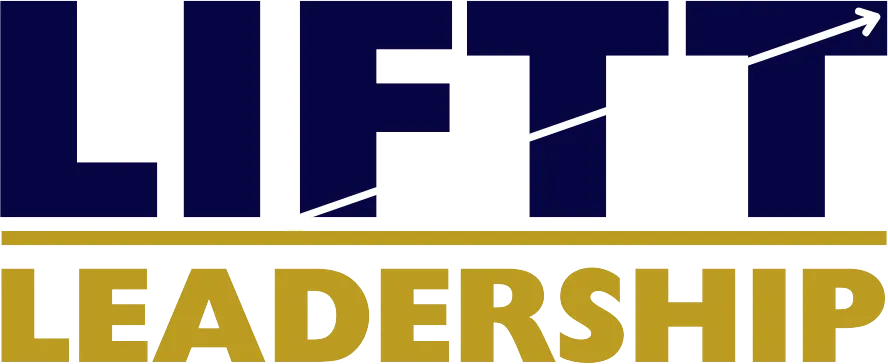
LIFTT For Leaders: Keeping It Together Under Pressure
For the Executive / Leader / High Performer
There’s a moment in every leader’s life when everything feels like it’s about to tip.
The boardroom is tense. You're watching faces tighten, pulses quicken, tempers flicker behind calm expressions. The stakes are high. There's uncertainty in the air, and all eyes are on you. Not because you have all the answers—but because you're expected to know what to do next.
It’s in this moment that true leadership reveals itself, not in strategy decks or well-rehearsed speeches, but in your nervous system.
This is the hidden layer of leadership most people ignore:
How you lead yourself when your emotional world is loud.
Emotional Steadiness Isn’t a Trait. It’s a Trained Skill.
There’s a myth that great leaders are naturally composed. But the truth is, emotional steadiness isn’t a trait—it’s a trained nervous system response.
Real leaders don’t stay calm because they were born that way. They stay calm because they’ve learned how to access calm on command. It’s emotional muscle memory. It’s trained regulation. It’s resilience built one moment, one breath, one decision at a time.
Your nervous system is your leadership infrastructure. And the most effective leaders understand this:
You can’t lead the room if you can’t lead your inner world.
LIFTT teaches this through our Higher Self vs. Lower Self framework. Not as a mindset trick — but as a body-based practice grounded in self-awareness and emotional regulation and neuroscience.
When cortisol spikes and the amygdala takes the wheel, your reactive patterns take over. You stop leading. You start surviving.
The invitation is simple — respond, don’t react.
The Power of the Pause: L.I.S.T.E.N. Before You Lead
When your body gets loud, your presence gets hijacked.
But in that micro-moment before reacting—before sending the email, snapping in a meeting, or shutting down emotionally—you have a doorway. A leadership access point.
We call it the L.I.S.T.E.N. Method:
Label what you're feeling ("I'm triggered. I'm tense. I'm scared.")
Inhale deeply (3–5 breaths)
Scan your body for tension
Think before you act — create 3 seconds of separation
Empathize with the other perspective (even if you don’t agree)
Navigate forward from values, not moods
This method restores access to your prefrontal cortex—the part of the brain responsible for logic, empathy, and vision. It’s simple science: the pause creates a path back to the Higher Self.
The greatest leaders pause long enough to access their wisdom.
Case Study: How Mike Rewired His Response Under Fire
Mike, a senior VP at a Silicon Valley financial tech firm, came into LIFTT feeling like he was “performing presence” but not embodying it.
In high-stakes boardroom moments, he’d either dominate the conversation (Lower Self: control) or check out emotionally (Lower Self: shutdown). He was respected professionally but burned out, reactive, and disconnected.
Together, we designed ritualized micro-moments around his day:
A breath and values reset before entering meetings
A cold rinse after morning workouts to activate vagal tone
A 60-second reflection each evening: Where did I lead from alignment? Where did I fragment?
Within weeks, feedback shifted. People noted his clarity. His calm. His presence.
He didn’t say more — he held more.
He began leading not from pressure, but from center.
(For anyone about to Google "vagal," it means "relating to the vagus nerve.")
Leading with Presence in High-Stakes Environments
Presence isn’t about charisma or command. It’s about clarity and coherence.
You’re not grasping. You’re not spinning. You’re grounded, alert, aware.
And when you lead from that energy, people don’t just listen to your words, they trust your being.
Presence communicates:
“We can breathe.”
“We are okay.”
“We don’t need to solve everything in this moment — we just need to stay in it together.”
Your calm is the strategy.
Anchors: Rituals That Return You to Yourself
In moments of chaos, we don't rise to the occasion—we fall to the level of our training.
This is why rituals matter. They are the anchors we build when things are calm, so we can access them when things are not.
Try these:
Breathwork Reset: Before every meeting, 90 seconds of 4-7-8 breathing (inhale 4, hold 7, exhale 8).
Cold Rinse / Cold Plunge: Regulates nervous system and trains tolerance to stress.
Future Self Journaling: 5 minutes in the morning: “How would my Higher Self lead today?”
Walking Deceleration: After big calls, go outside and walk with no phone, no agenda.
Evening Reset: Close the day with one question: “What am I proud of about how I showed up?”
This is part of your emotional insurance plan.
Support Yourself Before Supporting Others
If you try to pour from an anxious cup, you end up spilling fear into your team.
Before you lead them, check in with you.
Check-in script:
What’s my emotional state right now?
What’s my intention for this interaction?
Am I leading from my Higher Self or Lower Self?
Your state drives the state of the room.
When you’re regulated, you co-regulate others.
Calm is contagious.
Self-Leadership When Emotions Run High
Self-leadership isn’t just a concept. It’s a commitment.
It means you:
Recognize when you're triggered
Name your patterns instead of blaming others
Shift energy before speaking or acting
Re-align with your values, not your moods
This is the LIFTT path:
Self-Awareness → Self-Efficacy → Self-Mastery
When you lead from your Higher Self, you make different choices. You trust yourself. You become a source of safety—not a source of stress.
And that trust? That’s what creates real influence.
Final Reflection: Lead the Moment, Don’t Let the Moment Lead You
This isn’t about being perfect. It’s about being present.
Ask yourself:
What’s one moment today where I could have paused?
What ritual helps me reset fastest?
Where am I leading from reactivity instead of alignment?
The next time pressure rises, remember:
Leadership doesn’t begin in the boardroom. It begins in the breath before you walk in.
Want to build emotional resilience that actually lasts? Take the LIFTT Assessment and discover where your self-awareness and emotional regulation thrives, and where it needs reinforcement.
Take the Assessment → https://start.lifttleadership.com/assessment



